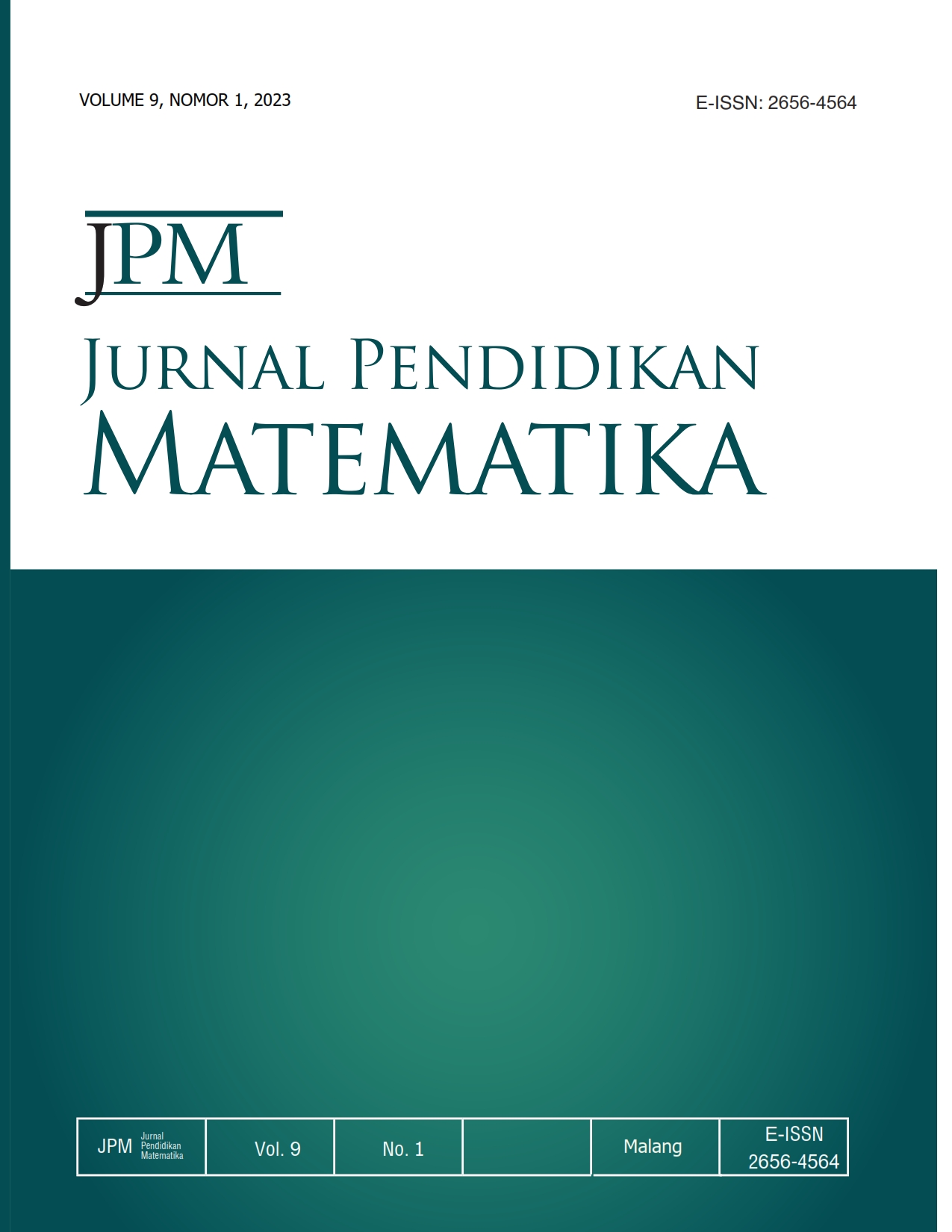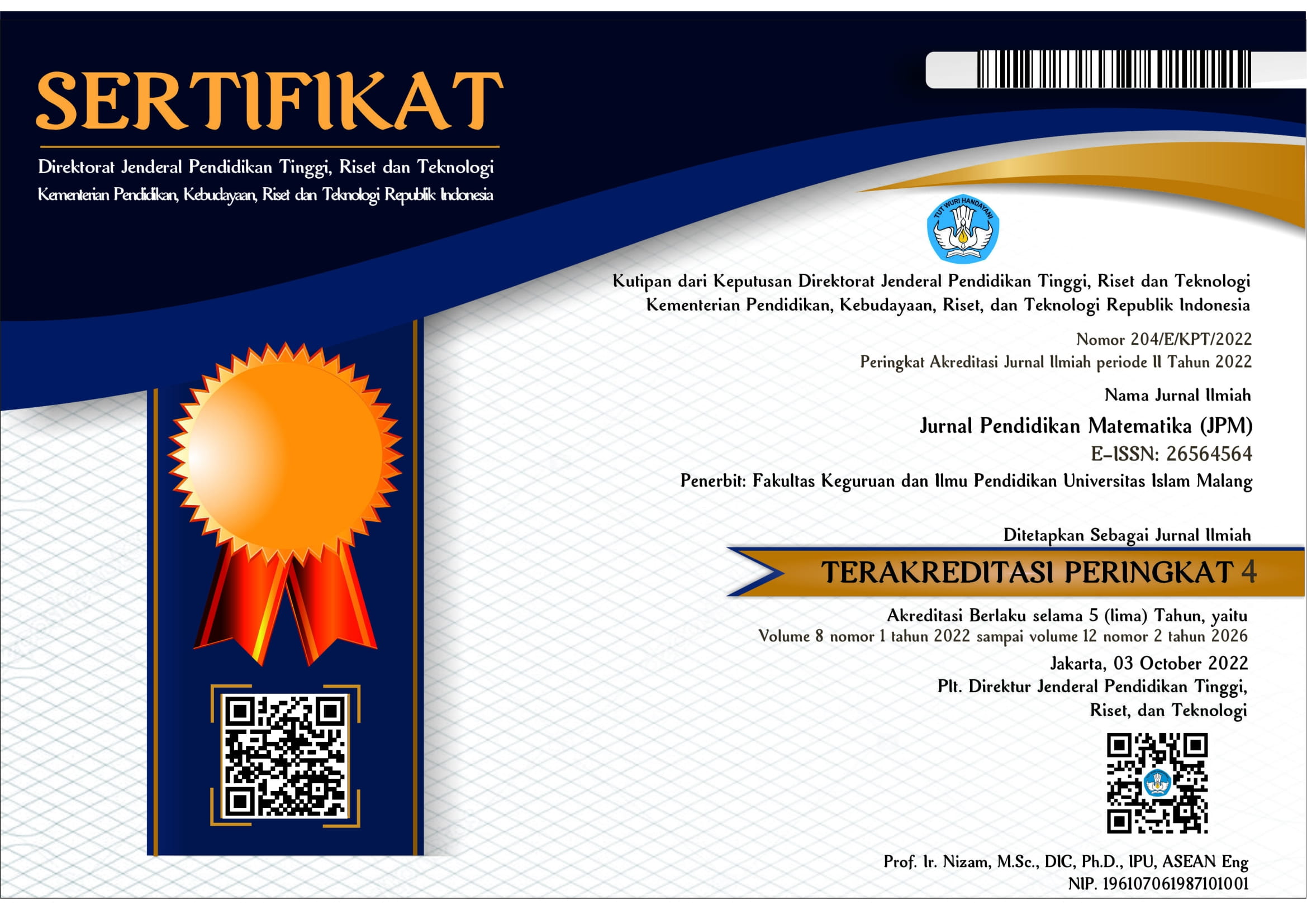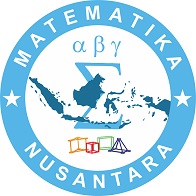Proses Pengajuan Masalah Tipe Post Solution pada Pengukuran Luas
DOI:
https://doi.org/10.33474/jpm.v9i1.19870Keywords:
Problem Posing, Post Solution, Area Measurement, Elementary SchoolAbstract
Penelitian ini bertujuan untuk mengidentifikasi proses pengajuan masalah tipe post solution yang digunakan siswa pada materi pengukuran luas. Jenis penelitian yang digunakan adalah kualitatif dengan pendekatan studi kasus. Subjek penelitian yang digunakan adalah 25 siswa kelas lima sekolah dasar. Pemilihan subjek penelitian menggunakan teknik purposive sampling berdasarkan kriteria yang berhasil menyelesaikan tugas. Teknik pengumpulan data menggunakan tes dan wawancara. Teknik analisis data terdiri dari reduksi data, penyajian data, dan verifikasi data. Dalam penelitian ini menggunakan tahapan pengajuan masalah yaitu analisis situasi, variasi, generasi, penyelesaian masalah, dan evaluasi. Hasil penelitian menunjukkan siswa yang mampu mengajukan masalah dan memberikan jawaban benar memiliki proses yang lebih tepat dari tahapan analisis situasi sampai evaluasi. Namun siswa yang sekedar mampu mengajukan masalah, namun tidak dapat menyelesaikan masalahnya mengalami kegagalan pada tahapan variasi, penyelesaian masalah, dan evaluasi. Hasil penelitian ini menyarankan agar siswa belajar untuk memahami dan mengubah informasi yang diberikan untuk melakukan pengajuan dan penyelesaian masalah. Hal ini berimplikasi pada para pendidik agar memberikan kesempatan kepada siswa dalam melakukan pengajuan masalah untuk mengeksplorasi cara berpikir dan memahami pengukuran luas yang lebih beragam.
References
Ainia, C., & Amir, M. F. (2021). Analysis of elementary school students difficulties’in solving integer word problems. MaPan: Jurnal Matematika Dan Pembelajaran, 9(2), 304–319. https://doi.org/10.24252/mapan.2021v9n2a8
Anggraini, A., Syofiana, M., & Ramadianti, W. (2023). Analisis kemampuan penalaran matematis siswa berbasis masalah pada materi bilangan pecahan. Range:Jurnal Pendidikan Matematika, 4(2), 267–277. https://doi.org/10.32938/jpm.v4i2.3156
Arikan, E. E., & Unal, H. (2014). Development of the structured problem posing skills and using metaphoric perceptions. European Journal of Science and Mathematics Education, 2(3), 155–166. https://doi.org/10.30935/scimath/9408
Baumanns, L., & Rott, B. (2022). Developing a framework for characterising problem-posing activities: a review. Research in Mathematics Education, 24(1), 28–50. https://doi.org/10.1080/14794802.2021.1897036
Campbell, R., Patterson, D., & Bybee, D. (2011). Using mixed methods to evaluate a community intervention for sexual assault survivors: A methodological tale. Violence against Women, 17(3), 376–388. https://doi.org/10.1177/1077801211398622
Christou, C., Mousoulides, N., Pittalis, M., Pitta-Pantazi, D., & Sriraman, B. (2005). An empirical taxonomy of problem posing processes. ZDM - International Journal on Mathematics Education, 37(3), 149–158. https://doi.org/10.1007/s11858-005-0004-6
Ciosek, M., & Samborska, M. (2016). A false belief about fractions–What is its source? The Journal of Mathematical Behavior, 42, 20–32. https://doi.org/10.1016/j.jmathb.2016.02.001
Contreras, J. (2007). Unraveling the mystery of the origin of mathematical problems: using a problem-posing framework with prospective mathematics teachers. The Mathematics Educator, 17(2), 15–23. https://ojs01.galib.uga.edu/tme/article/view/1914
English, L. D. (1997). The development of fifth-grade children’s problem-posing abilities. Educational Studies in Mathematics, 34(3), 183–217. https://doi.org/10.1023/A:1002963618035
Faoziyah, N. (2022). Kemampuan pemecahan masalah matematis siswa melalui pembelajaran berbasis PBL. JUPE: Jurnal Pendidikan Mandala, 7(2). https://doi.org/10.58258/jupe.v7i2.3555
Hakim, A. H. M., & Husna, N. A. H. (2023). Upaya peningkatan kemampuan pemecahan masalah matematika peserta didik melalui pendekatan problem posing berbantuan quiziz. Jurnal Pendidikan Dan Kebudayaan (JURDIKBUD), 3(1), 37–43. https://doi.org/10.55606/jurdikbud.v3i1.889
Hijriyah, U., Pratiwi, E., Susanti, A., Anggraini, W., & Febriani, A. P. (2020). The effect of problem posing type post-solution posing learning model on self-regulation skills and science process skill of the tenth-grade students of islamic senior high school kebumen, tanggamus. Journal of Physics: Conference Series, 1467(1), 12042. https://doi.org/10.1088/1742-6596/1467/1/012042
Himmah, W. I., & Istiqlal, M. (2019). Keefektifan pembelajaran problem posing tipe post solution posing terhadap kemampuan pemecahan masalah matematika. Kreano, Jurnal Matematika Kreatif-Inovatif, 10(1), 78–85. https://doi.org/10.15294/kreano.v10i1.12695
Iswanto, I. (2022). Problem posing untuk meningkatkan kemampuan berpikir kreatif. Strategy: Jurnal Inovasi Strategi Dan Model Pembelajaran, 2(3), 365–370. https://doi.org/10.51878/strategi.v2i3.1468
Kadir, I. A., Machmud, T., Usman, K., & Katili, N. (2022). Analisis kemampuan berpikir kreatif matematis siswa pada materi segitiga. Jambura Journal of Mathematics Education, 3(2), 128–138. https://doi.org/10.34312/jmathedu.v3i2.16388
Leavy, A., & Hourigan, M. (2022). Balancing competing demands: Enhancing the mathematical problem posing skills of prospective teachers through a mathematical letter writing initiative. Journal of Mathematics Teacher Education, 25(3), 293–320. https://doi.org/10.1007/s10857-021-09490-8
Lee, M. Y., & Lee, J. E. (2021). Spotlight on area models: pre-service teachers’ ability to link fractions and geometric measurement. International Journal of Science and Mathematics Education, 19(5), 1079–1102. https://doi.org/10.1007/s10763-020-10098-2
Osana, H. P., & Pelczer, I. (2015). A review on problem posing in teacher education. Mathematical Problem Posing: From Research to Effective Practice, 469–492. https://doi.org/10.1007/978-1-4614-6258-3_23
Papadopoulos, I., Patsiala, N., Baumanns, L., & Rott, B. (2022). Multiple approaches to problem posing: Theoretical considerations regarding its definition, conceptualisation, and implementation. Center for Educational Policy Studies Journal, 12(1), 13–34. https://doi.org/10.26529/cepsj.878
Rohmahh, D. I., & Rosyidi, A. H. (2022). Analisis kegagalan siswa SMA dalam pemecahan masalah kontekstual materi kesebangunan. MATHEdunesa, 11(3), 765–778. https://doi.org/10.26740/mathedunesa.v11n3.p765-778
Silver, E. A. (1994). On mathematical problem posing. For the Learning of Mathematics, 14(1), 19–28. https://www.jstor.org/stable/40248099
Silver, E. A., & Cai, J. (1996). An analysis of arithmetic problem posing by middle school students. Journal for Research in Mathematics Education, 27(5), 521–539. https://doi.org/10.2307/749846
Singer, F. M., Nerida F, E., & Cai, J. (2015). Mathematical problem posing: From research to effective practice. Mathematical Problem Posing: From Research to Effective Practice, 1–569. https://doi.org/10.1007/978-1-4614-6258-3
Singer, F. M., Voica, C., & Pelczer, I. (2017). Cognitive styles in posing geometry problems: implications for assessment of mathematical creativity. ZDM - Mathematics Education, 49(1), 37–52. https://doi.org/10.1007/s11858-016-0820-x
Song, S., Yim, J., Shin, E., & Lee, H. (2007). Posing problems with use the ‘what if not?’strategy in NIM game. Proceedings of the 31st Conference of the International Group for the Psychology of Mathematics Education, 4, 193–200.
Stoyanova, E. (2005). Problem-posing strategies used by years 8 and 9 students. Australian Mathematics Teacher, The, 61(3), 6–11.
Sugiyono. (2022). Metode penelitian kuantitatif, kualitatif, dan R&D. Bandung: Alfabeta.
Xie, J., & Masingila, J. O. (2017). Examining interactions between problem posing and problem solving with prospective primary teachers: A case of using fractions. Educational Studies in Mathematics, 96, 101–118. https://doi.org/10.1007/s10649-017-9760-9
Zeybek, Z., & Francis, D. I. C. (2017). Let’s cut the cake. Teaching Children Mathematics, 23(9), 542–548. https://doi.org/10.5951/teacchilmath.23.9.0542
Downloads
Published
How to Cite
Issue
Section
License
Copyright (c) 2023 Beta Ayu Widianti, Mohammad Faizal Amir

This work is licensed under a Creative Commons Attribution 4.0 International License.






_-_Copy.jpg)
.jpg)
.jpg)










